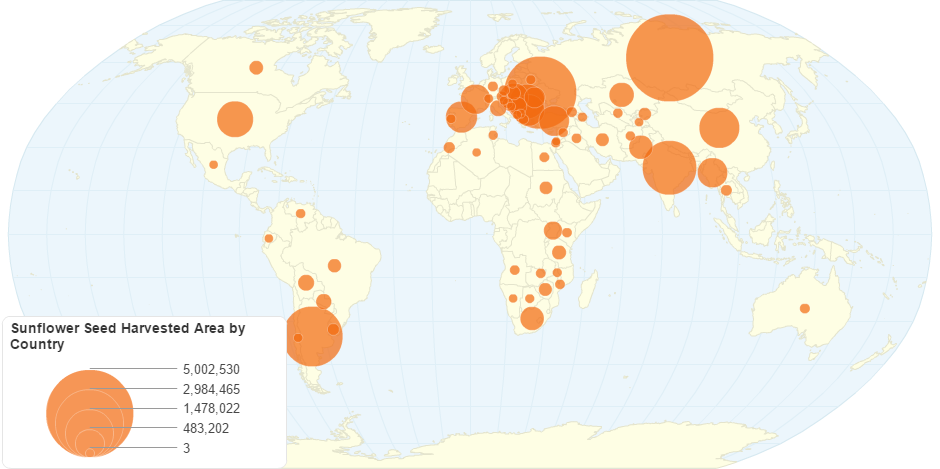This chart shows Sunflower Seed Harvested Area by Country.
The sunflower seed is the fruit of the sunflower (Helianthus annuus). The term "sunflower seed" is actually a misnomer when applied to the seed in its pericarp . Botanically speaking, it is a cypsela. When dehulled, the edible remainder is called the sunflower kernel or heart.
There are three types of commonly used sunflower seeds: linoleic , high oleic, and NuSun. Each variety has its own unique levels of monounsaturated, saturated, and polyunsaturated fats. The information in this article refers mainly to the linoleic variety.
For commercial purposes, sunflower seeds are usually classified by the pattern on their husks. If the husk is solid black, the seeds are called black oil sunflower seeds. The crops may be referred to as oilseed sunflower crops. These seeds are usually pressed to extract their oil. Striped sunflower seeds are primarily used for food; as a result, they may be called confectionery sunflower seeds.
Sunflower seeds are more commonly eaten as a snack than as part of a meal. They can also be used as garnishes or ingredients in various recipes. The seeds may be sold as in-shell seeds or dehulled kernels. The seeds can also be sprouted and eaten in salads.
In a 100-gram serving, dried whole sunflower seeds provide 584 calories and are composed of 5% water, 20% carbohydrates, 51% total fat and 21% protein . The seeds are a rich source of protein , dietary fiber , many B vitamins and vitamin E . The seeds also contain high levels of dietary minerals, including magnesium, manganese, phosphorus, iron and zinc .
Half of a 100-gram serving is fat, mainly monounsaturated and polyunsaturated fats, principally linoleic acid. Additionally, the seeds contain phytosterols which may contribute toward lower levels of blood cholesterol.
9 years ago

